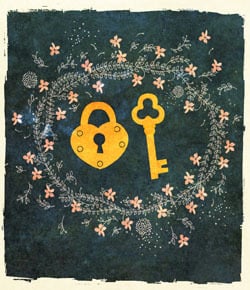
“You should do it. It’ll give you something to write about!” my husband’s cousin Rochel effused in her inimitable, hard-to-refuse way.
She wanted me to be part of the chevra kaddisha, the Jewish burial society. I knew that such an organization existed, but, I mean, who actually wants to join this club? When Rochel suggested I consider becoming a member, I felt a little obligated and more than a little intrigued, so I said I would give it a try. A few days later I got a call from Naomi, a woman Rochel described as an expert at performing the taharah, the process by which Jews are prepared for burial.
“Are you available at five tonight?” Naomi asked almost cryptically. I answered that I was. She told me they would be expecting me at the funeral home; I should go straight to the back.
As I walked into the funeral home exactly at five, I felt a quiet rush of Jewish connectedness—I didn’t know what I was doing, but I felt honored to be doing it. I walked through the back doors of the warm, plant-filled chapel and entered the other room, the place where the burial preparations happen.
There’s not much I can tell you about the taharah process, because it’s meant to be carried out with the utmost privacy and respect for the deceased. I can tell you that this preparation is typically done by four people. (As a first-time observer, I didn’t count as one.) Women prepare women for burial; men prepare men.
When I walked into the room, two women were already there, and so was the meis, the body of the deceased woman. When the two other women arrived and the process got fully underway, we communicated almost exclusively through hand-motioning and head-nodding. (Naomi had told me earlier that conversation would be minimal during the process, but I didn’t realize how minimal.) I learned later that the departed person’s soul is actually present in the room, hovering between the physical and spiritual worlds. Under these circumstances, the less said, the better.
I can tell you the preparation is gentle and respectful, with the body covered whenever possible. The body is washed with lukewarm water in an orderly and highly collaborative process, before being rinsed, dried and dressed in simple white shrouds.
The detailed taharah process testifies to the intrinsic holiness of every Jew whose soul is about to journey from one world to the next. Every body receives equal care in that room. So I can tell you it’s not hypocritical for a Jewish person to choose a Jewish burial even if that person didn’t choose to live a Jewish life.
I can also tell you there are selfless people in every Jewish community all over the world who make themselves available whenever they’re needed to perform this mitzvah (known as chesed shel emet, true kindness, because the deceased person can never reciprocate)—and almost nobody knows who these people are. I was awestruck by the holiness of the people who facilitate this process. I had no idea these women in my community performed such a selfless, sacred task.
Jewish burial preparation is one of those rituals Jews have done for thousands of years, but it’s one of those rituals I had never experienced. In the brief hour I spent with these women, I felt humbled to be in the presence of people who provide such an essential link in the chain of Jewish life—yet they do it all in secret. I guess when you spend such intimate time with G‑d—experiencing His miraculously clear separation of body and soul—that’s job satisfaction enough.
In that one hour in the back of a funeral home, I saw this mitzvah as an archetypal convergence of matter and spirit, the essence of Judaism. I saw in a new way how all Jews are connected—even those whose life force has left them. I may have been only an observer that day, but I can tell you I gained a new appreciation for the way Judaism regards life from beginning to end.





